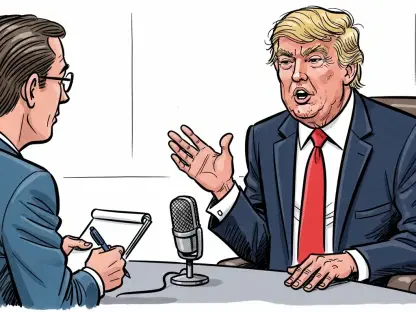Navigating the Election Technology Terrain
Changes to U.S. voting systems and the broader electoral landscape have been triggered by an executive order from former President Donald Trump. The directive focuses on altering election regulations, aiming to remove machine-readable codes like barcodes and QR codes from voting systems. With these shifts, stakeholders must scrutinize the balance between election security, efficiency, practicality, and fiscal implications in the evolving American electoral context.
Analyzing the Historical Shifts and Industrial Dynamics
Voting technology in the United States has transformed significantly from traditional paper ballots to advanced electronic systems over recent decades. These technological advances aimed to increase efficiency, speed, and accuracy in the voting and counting processes. Notably, barcode and QR code integration represented a shift towards quicker vote tabulation. Trump’s executive order presents a potential shift back to traditional methods, demanding attention to an impending upheaval in the industry. Understanding the evolution of these systems and the implications of moving away from them is essential for market forecasting and industry analysis.
Redefining Security in Election Systems
Machine-Readable Codes: Benefits and Limitations
The push to exclude barcodes and QR codes from voting processes has taken center stage in recent electoral reforms. On the one hand, these codes have streamlined operational efficiencies in voting, yet critics warn they may obscure voter intent and undermine election integrity. With counties like Montgomery County, Ohio heavily reliant on barcode technologies, there’s an urgent need to evaluate the advantages and drawbacks these codes present. Analyzing both actual case outcomes and theoretical expectations will aid in assessing whether the proposed changes are necessary for enhanced election security.
Innovations Versus Voter Assurance
The challenge of maintaining cutting-edge voting technology while preserving public confidence in electoral systems is another key issue. Jurisdictions like Los Angeles County are pioneering efforts towards transparent decoding of QR codes to ensure voter trust. The shifting dynamics necessitate exploring alternatives to current systems, and balancing innovative aspirations with voter assurance forms a critical point of examination for technology providers and election officials.
Regional Responses and Economic Assessments
The response to Trump’s executive order varies across different U.S. regions, with states like Texas investing in new, barcode-free systems. A comprehensive analysis of regional dynamics, fiscal challenges, and expert insights reveals the potential cost and logistical challenges faced by localities in adopting these changes. Exploring the discrepancies between policy changes and real-world applications is crucial for anticipating shifts within the voting technology market.
The Future of Voting Technology: Projections and Innovations
Looking ahead, new trends and innovations like blockchain voting and enhanced authentication are poised to reshape voting systems. These technological advances offer possibilities for increased security but also introduce greater complexity. Future regulatory changes and economic factors will likely dictate the direction of the voting technology industry. Experts project a landscape marked by both challenges and opportunities, necessitating stakeholders to anticipate and adapt to these emergent trends for sustained electoral integrity.
Strategic Pathways for Future Implementation
The analysis leads to strategic insights vital for navigating the anticipated shifts. Election officials, technology vendors, and policymakers must align their strategies with actionable steps grounded in practical applications. Best practices emphasize adapting to federal changes while ensuring systems maintain voter trust and security. Offering strategic recommendations ensures preparedness for the ongoing transition.
Concluding the analysis, it’s observed that Trump’s executive order introduced a contentious decision influencing election security reforms and efficiencies. The discourse on this issue highlighted diverse viewpoints and future expectations. Understanding complex policy interactions, innovative trends, and practical challenges identified possible paths forward for upgrading voting systems and maintaining trust in the electoral process. The electoral landscape demanded informed actions, considering each locality’s unique circumstances while embracing advancements in voting technologies.









